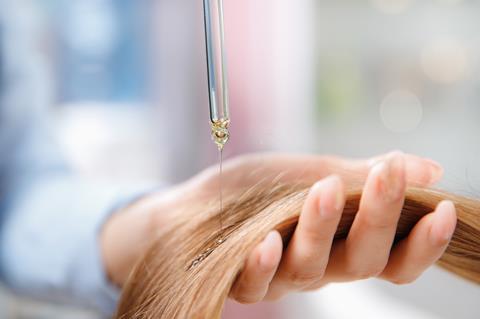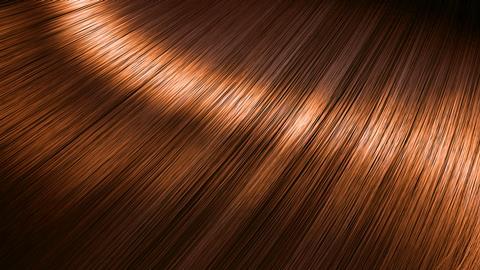Meera Senthilingam
This week, the nails come out, as things get a little hairy - and hoofy. Bringing us the chemistry that brings this all together, is Brian Clegg
Brian Clegg
If there is one substance that cosmetic manufacturers offer thanks for every day, it's keratin. Not so much as a component to fill their pots and vials (though it does find its way into some) but as the substance they seem to spend most of their time treating. Because keratin is the tough structural protein that gives form to skin, hair and nails (not to mention hooves and horns, scales and shells, beaks and baleen - should you have them). Keratin is also sometimes used as a label for the fibres in silk, though these are not such a closely related substance.

Keratin is not a single compound, but rather a family of chunky structures that occupy one class of proteins - fibrous proteins - alongside the globular and conjugated varieties. Collagen is another fibrous protein, and generally speaking these long molecules provide protection and support for other molecules in a living body. Rather like the individual cords making up a rope, keratin monomers twist around each other to produce intermediate filaments which build up to form those familiar structures.
The term 'keratin' is derived from the Greek word 'kera', meaning horn, and dates back to the mid-1800s, with a first reference to it from an 1849 work saying that the protein in hair, horn, nails and the epidermis had been 'called by Simon keratine' with an E on the end. Sadly, history does not record who Simon was. Although it was apparent that keratin was a protein, it had different characteristics from many other such compounds, resisting many of the solvents that dissolved more typical proteins.
It is no more possible to give a specific formula for keratin than it is for DNA - it is not only a family of proteins but also has a complex form combining two so-called secondary structures. The first of these are alpha helixes, which are right-handed twisting structures of linked amino acids, with hydrogen bonds connecting the loops to keep the helix stable. The second are beta sheets, where polypeptide chains of amino acids are linked side-to-side by hydrogen bonds to form a planar configuration. They are pulled together by disulfide bridges, which are covalent bonds linking thiols, the sulfur equivalent of alcohols with sulfur in place of oxygen. It is this combination that gives keratins their strength. Different forms lead to greater flexibility for hair and skin, or rigidity for nails and hooves.
The American physical chemist Linus Pauling dreamed up the structure of the alpha spiral while ill in bed in Oxford in 1948. He had conjectured a spiral structure eleven years before, but it had been discounted because it didn't agree with X-ray crystallography studies of proteins (though these had in fact been misinterpreted because the angle the molecules were photographed at did not properly reveal their structure.) Now, in his sickbed, he conceived of a way that a helix of amino acids at a particular angle would allow for hydrogen bonds linking one twist to another, adding stability to the structure.
Despite counter arguments from Lawrence Bragg's team at Cambridge, which in 1950 suggested that the alpha structure in keratin was more like a ribbon of repeated forms, folded back and forth concertina fashion, Pauling stuck to his guns. With colleague Robert Corey, he published a string of papers in the early 1950s detailing the structures of a range of proteins, including the alpha keratin helix. Bragg's colleague at Cambridge, Max Perutz, was inspired by the paper on keratin to go into the lab on a Saturday and set up an X-ray crystallography experiment on a horsehair. His photograph confirmed the helix structure. Both Pauling and Perutz would win Nobel prizes for their work on proteins.

Although an essential for much animal life, keratin has relatively few products based on it. There are cosmetics incorporating keratin and there are also keratin hair treatments developed in Japan and Brazil which are claimed to add body and shine to hair while controlling frizziness. A permanent wave or perm is a process that works on our natural keratins, using a reducing agent to break down the disulfide bridges between the keratin helixes and then adding an oxidizing agent to reconstitute the bridges. More substantially, work has been done on using keratin coatings on vascular grafts to reduce blood clotting, and work continues on medical applications including drug-delivery mechanisms and support for wound healing.
Given that keratin-dependent bits of the body are so important in the way we and other animals look, it's rather surprising that most of our keratin-based components are dead. Hair, nails and the outer layer of skin are hugely important parts of a living body, but paradoxically they are lifeless themselves (which makes it rather entertaining that shampoo manufacturers are always encouraging us to nourish our entirely dead hair).
We don't really think much about keratin. It's just there. But without it, that glossy hair, those elegant nails and that flawless skin could never exist. We may be creatures of flesh and blood - but it's the keratin that finishes off our polished image to the world. I'm ready for my close-up, Mr De Mille.
Meera Senthilingam
So for a great first impression, turn to your keratin. That was science writer Brian Clegg with the chemistry of keratin, a compound providing us with our finishing touches. Next week, things aren't quite so superficial, as we hear the consequences of when a drug goes wrong.
Simon Cotton
In the spring of 1961, a young Hamburg lawyer called Karl Schulte-Hillen went to see Professor Widukind Lenz, head of the children's clinic at Hamburg University. His wife Linde had given birth to a son with short, seal-like, arms, a complaint known as phocomelia, which was sadly to become only too familiar. Lenz made enquiries and found 46 mothers of children with such malformed limbs. Nearly all had taken thalidomide.
Meera Senthilingam
And you can find out the chemistry causing these debilitating effects by joining Simon Cotton in next week's Chemistry in its element. Until then, thank you for listening, I'm Meera Senthilingam.













No comments yet